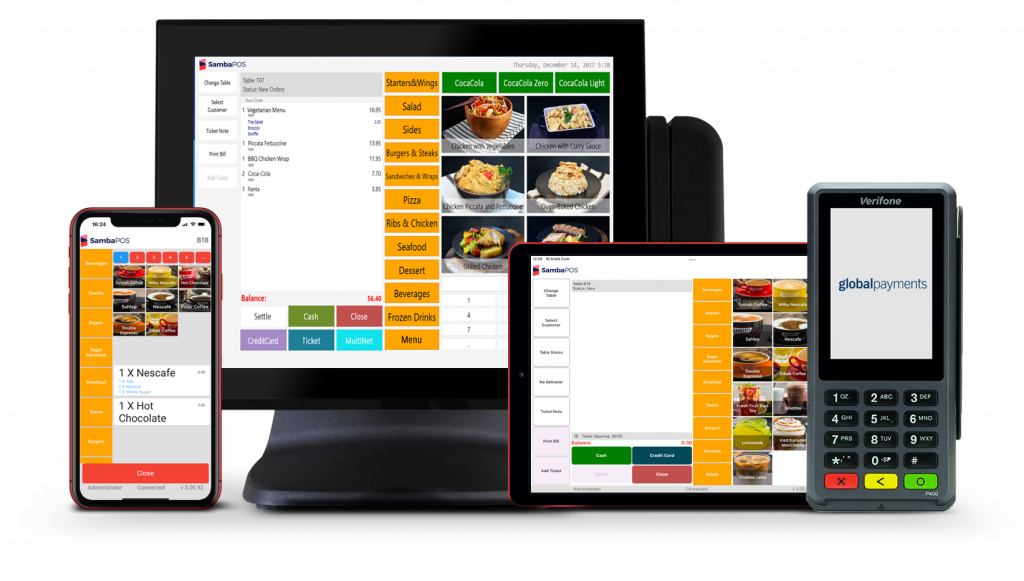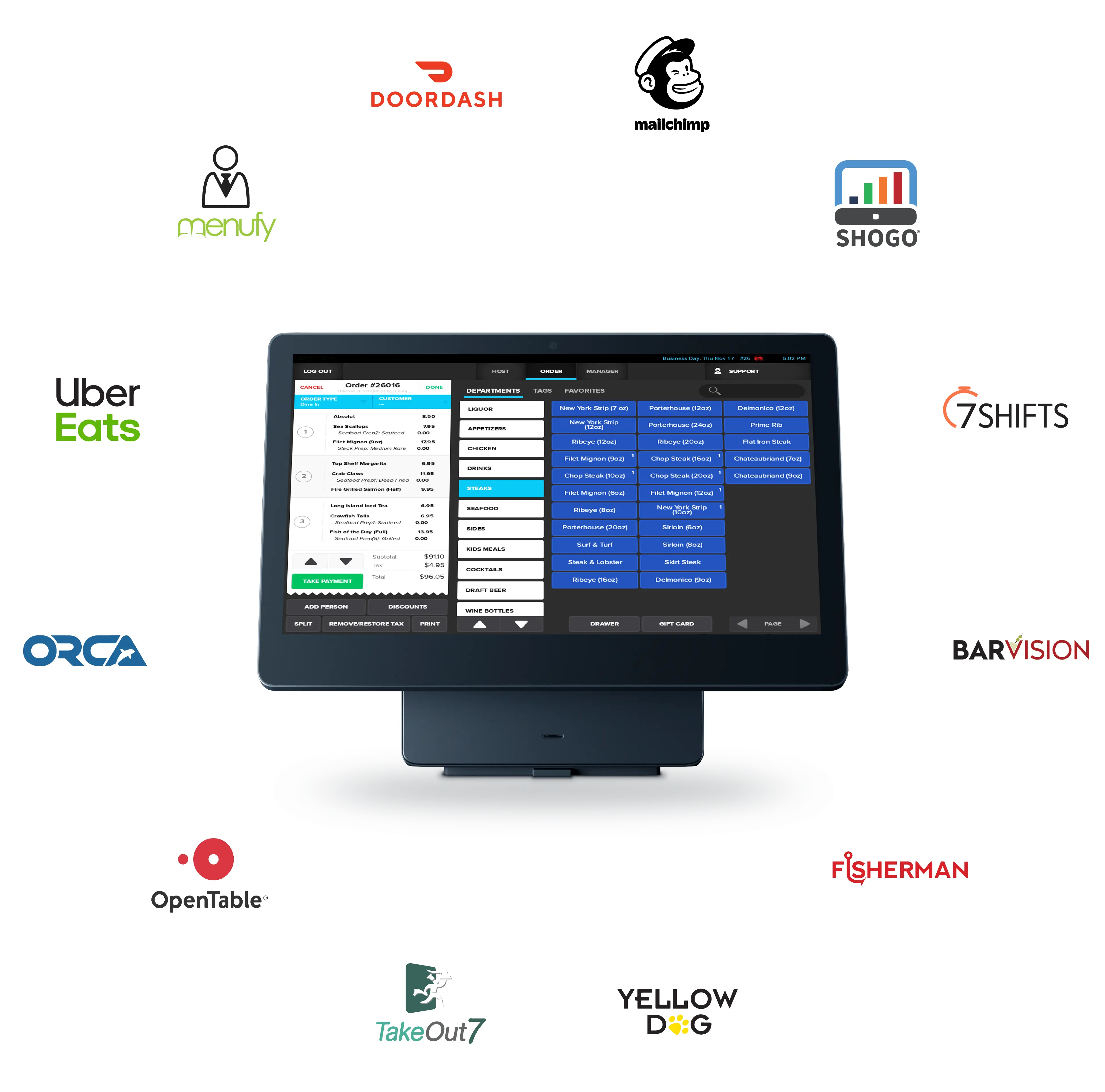Just How POS System Functions: A Comprehensive Overview for Entrepreneur
A POS system acts as an important tool for modern services, integrating numerous parts to simplify operations. It encompasses equipment like barcode scanners and software application available for sale monitoring. This system not just refines deals but also handles inventory and assesses customer actions. Recognizing its performance can significantly impact a business's effectiveness and decision-making. What are the key elements that add to this efficiency? Discovering these elements uses valuable insights.
Comprehending the Parts of a POS System
A Factor of Sale (POS) system is composed of numerous vital components that interact to facilitate purchases and handle business procedures. At its core, the equipment consists of gadgets such as a sales register, barcode scanner, receipt printer, and payment terminal, all essential for refining sales (Restaurant POS Software). The software application part takes care of supply, sales monitoring, and consumer information, offering important insights for organization decisions.Additionally, databases keep transaction documents and customer information, ensuring information honesty and security. Network connectivity enables real-time updates and access to cloud-based solutions, enhancing operational efficiency. Interface, made for convenience of use, allow personnel to browse the system quickly, reducing training time. With each other, these components create a natural system that enhances the sales procedure, improves customer support, and help in reliable management of service sources. Understanding these parts is essential for company owner seeking to enhance their POS systems
How Sales Transactions Are Processed
When a customer determines to make a purchase, the sales purchase initiates a collection of organized steps within the POS system. The cashier inputs the items being bought, which are scanned via a barcode visitor or by hand gone into. This action obtains item details, consisting of prices and appropriate taxes, from the system's database.Next, the customer exists with the complete quantity due. The POS system after that refines the payment, whether via money, charge card, or mobile repayment methods. For digital repayments, the POS securely interacts with repayment processors to accredit and confirm the transaction.Once the payment is verified, the system produces a receipt, which can be published or sent out digitally. This receipt functions as evidence of acquisition for the customer. The deal data is taped in the system, making certain accurate sales documents and monetary tracking for the organization.
Supply Management and Monitoring
Efficient stock monitoring and monitoring are essential components of a POS system, as they assure that companies maintain perfect supply degrees and reduce inconsistencies. A robust POS system permits real-time inventory updates, mirroring sales and returns immediately. This enables local business owner to keep an eye on stock levels properly, making certain that prominent items are conveniently available while stopping overstocking of much less preferred products.Additionally, advanced POS systems provide attributes such as automated stock signals and reorder ideas, improving the purchase procedure. Barcoding and RFID modern technology boost precision in tracking stock movement, decreasing human mistake. Substantial reporting tools give understandings right into stock turn over rates, assisting companies make notified choices regarding purchasing and product offerings. Ultimately, efficient supply administration via a POS system not just enhances operational performance but additionally improves client satisfaction by making sure product schedule.

Analyzing Customer Information and Insights
Consumer data evaluation functions as an effective device for companies using a POS system. By accumulating and analyzing deal information, companies can discover important understandings about client habits and preferences. This analysis allows them to identify acquiring fads, peak buying times, and popular products, thereby notifying supply choices and marketing strategies.Additionally, services this post can section their client base, allowing for customized advertising and marketing efforts that satisfy particular demographics or buying practices. Understanding consumer commitment patterns also aids in creating targeted promos and incentives programs.The data amassed from a POS system can also disclose insights into consumer responses, making it possible for businesses to make informed choices relating to product offerings and service renovations. Ultimately, leveraging customer information properly can improve the overall purchasing experience, foster client complete satisfaction, and drive profits growth.
Benefits of Executing a POS System
Executing a POS system provides numerous benefits that can considerably enhance organization procedures. To begin with, it simplifies deal processes, lowering wait times and boosting client satisfaction. By automating sales procedures, companies can reduce human mistake and warranty exact record-keeping. Furthermore, a POS system provides valuable data analytics, allowing proprietors to track sales fads and inventory levels in real-time. This insight sustains notified decision-making, helping to maximize stock monitoring and advertising strategies.Moreover, lots of POS systems incorporate with various other service tools, such as audit software application, simplifying financial management. Boosted employee management functions, such as tracking hours and efficiency, further add to operational efficiency.Lastly, the execution of a POS system can result in raised profits with enhanced customer experiences and tactical understandings, ultimately cultivating organization growth and sustainability.
Frequently Asked Concerns
What Kinds of Services Can Gain From a POS System?

Exactly how Much Does a POS System Normally Price?
The price of a POS system generally ranges from a couple of hundred to numerous thousand bucks, depending on features, hardware, and software application - Restaurant POS Software. Services have to take into consideration recurring costs for maintenance, assistance, and deal processing when budgeting

Can I Incorporate a POS System With Existing Software?
Incorporating link a POS system with existing software program is usually viable. Several systems use APIs or built-in compatibility attributes, permitting services to streamline operations and boost capability by attaching various software application applications properly.
What Training Is Needed for Personnel to Utilize a POS System?
Educating for team to utilize a POS system typically he has a good point consists of understanding software program functionalities, processing purchases, managing inventory, and taking care of client interactions - Restaurant POS Software. Practical demonstrations and hands-on practice enhance effectiveness and self-confidence in operation the system properly
What Happens if the Internet Decreases While Using a POS System?
If the web decreases during POS system use, transactions might be interrupted. Lots of systems provide offline abilities, allowing fundamental procedures to continue, yet full performance, including real-time supply updates, will certainly be limited.